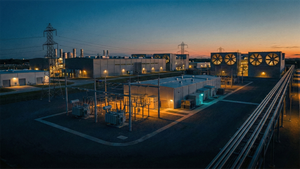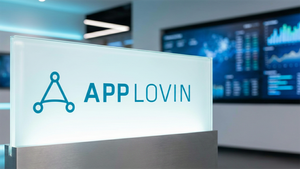
Industrial technology solutions provider EnPro Industries (NYSE: NPO) reported Q4 CY2024 results beating Wall Street’s revenue expectations, with sales up 3.7% year on year to $258.4 million. Its non-GAAP profit of $1.57 per share was 6.6% above analysts’ consensus estimates.
Is now the time to buy Enpro? Find out by accessing our full research report, it’s free.
Enpro (NPO) Q4 CY2024 Highlights:
- Revenue: $258.4 million vs analyst estimates of $250.1 million (3.7% year-on-year growth, 3.3% beat)
- Adjusted EPS: $1.57 vs analyst estimates of $1.47 (6.6% beat)
- Adjusted EBITDA: $58.2 million vs analyst estimates of $55.3 million (22.5% margin, 5.2% beat)
- Adjusted EPS guidance for the upcoming financial year 2025 is $7.35 at the midpoint, missing analyst estimates by 2.5%
- EBITDA guidance for the upcoming financial year 2025 is $269.5 million at the midpoint, in line with analyst expectations
- Operating Margin: 12.5%, up from 10.5% in the same quarter last year
- Free Cash Flow Margin: 18.3%, up from 16.2% in the same quarter last year
- Market Capitalization: $3.94 billion
"Our strong finish to 2024 was driven by excellent performance in Sealing Technologies and sequential improvement in sales and segment profitability at AST," said Eric Vaillancourt, President and Chief Executive Officer.
Company Overview
Holding a Guinness World Record for creating the world's largest gasket, Enpro (NYSE: NPO) designs, manufactures, and sells products used for machinery in various industries.
Engineered Components and Systems
Engineered components and systems companies possess technical know-how in sometimes narrow areas such as metal forming or intelligent robotics. Lately, automation and connected equipment collecting analyzable data have been trending, creating new demand. On the other hand, like the broader industrials sector, engineered components and systems companies are at the whim of economic cycles. Consumer spending and interest rates, for example, can greatly impact the industrial production that drives demand for these companies’ offerings.
Sales Growth
Examining a company’s long-term performance can provide clues about its quality. Any business can put up a good quarter or two, but the best consistently grow over the long haul. Enpro struggled to consistently generate demand over the last five years as its sales dropped at a 2.8% annual rate. This was below our standards and is a sign of lacking business quality.
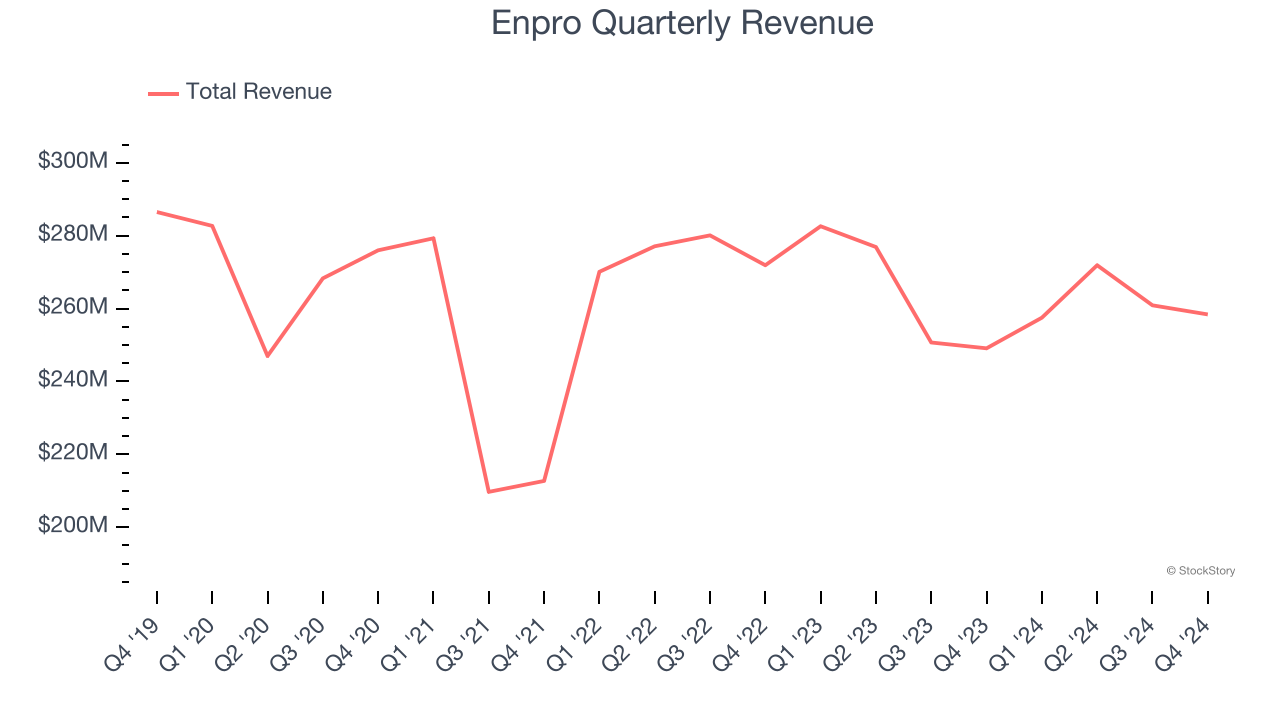
Long-term growth is the most important, but within industrials, a half-decade historical view may miss new industry trends or demand cycles. Enpro’s annualized revenue declines of 2.3% over the last two years align with its five-year trend, suggesting its demand consistently shrunk. 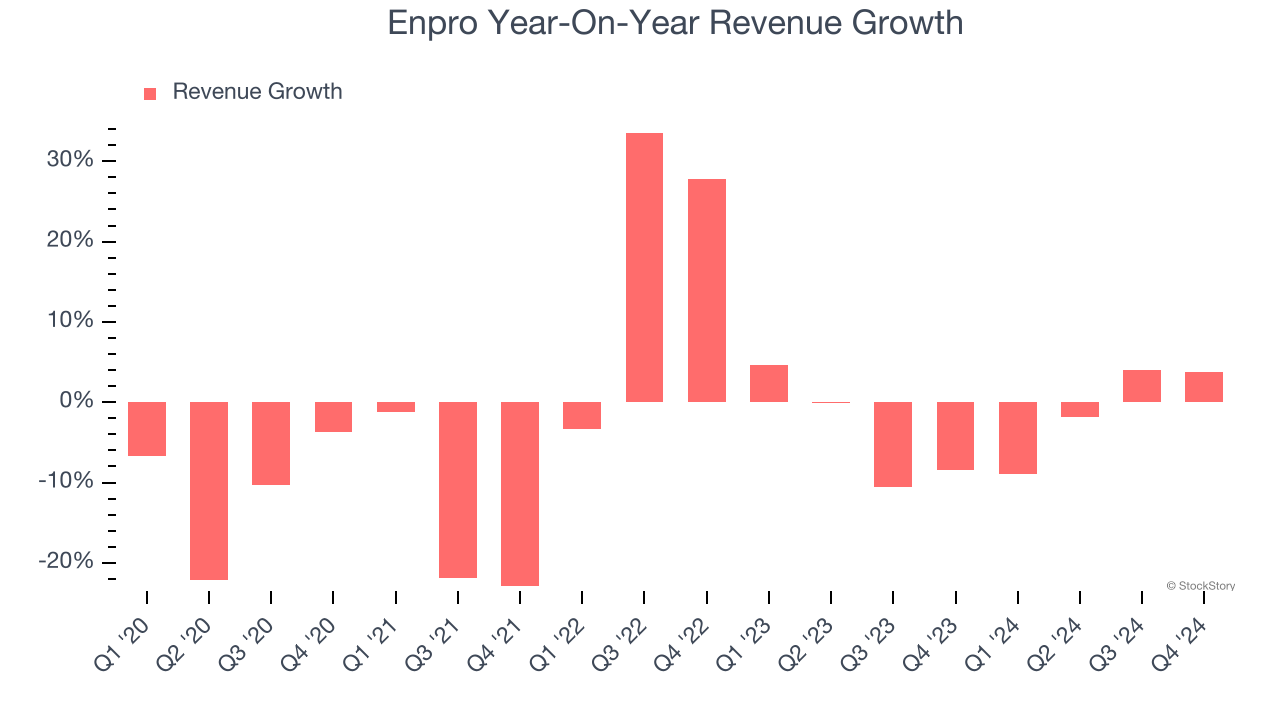
This quarter, Enpro reported modest year-on-year revenue growth of 3.7% but beat Wall Street’s estimates by 3.3%.
Looking ahead, sell-side analysts expect revenue to grow 2.8% over the next 12 months. While this projection implies its newer products and services will fuel better top-line performance, it is still below average for the sector.
Software is eating the world and there is virtually no industry left that has been untouched by it. That drives increasing demand for tools helping software developers do their jobs, whether it be monitoring critical cloud infrastructure, integrating audio and video functionality, or ensuring smooth content streaming. Click here to access a free report on our 3 favorite stocks to play this generational megatrend.
Operating Margin
Operating margin is one of the best measures of profitability because it tells us how much money a company takes home after procuring and manufacturing its products, marketing and selling those products, and most importantly, keeping them relevant through research and development.
Enpro has managed its cost base well over the last five years. It demonstrated solid profitability for an industrials business, producing an average operating margin of 11.7%. This result isn’t surprising as its high gross margin gives it a favorable starting point.
Analyzing the trend in its profitability, Enpro’s operating margin rose by 7.6 percentage points over the last five years, showing its efficiency has meaningfully improved.
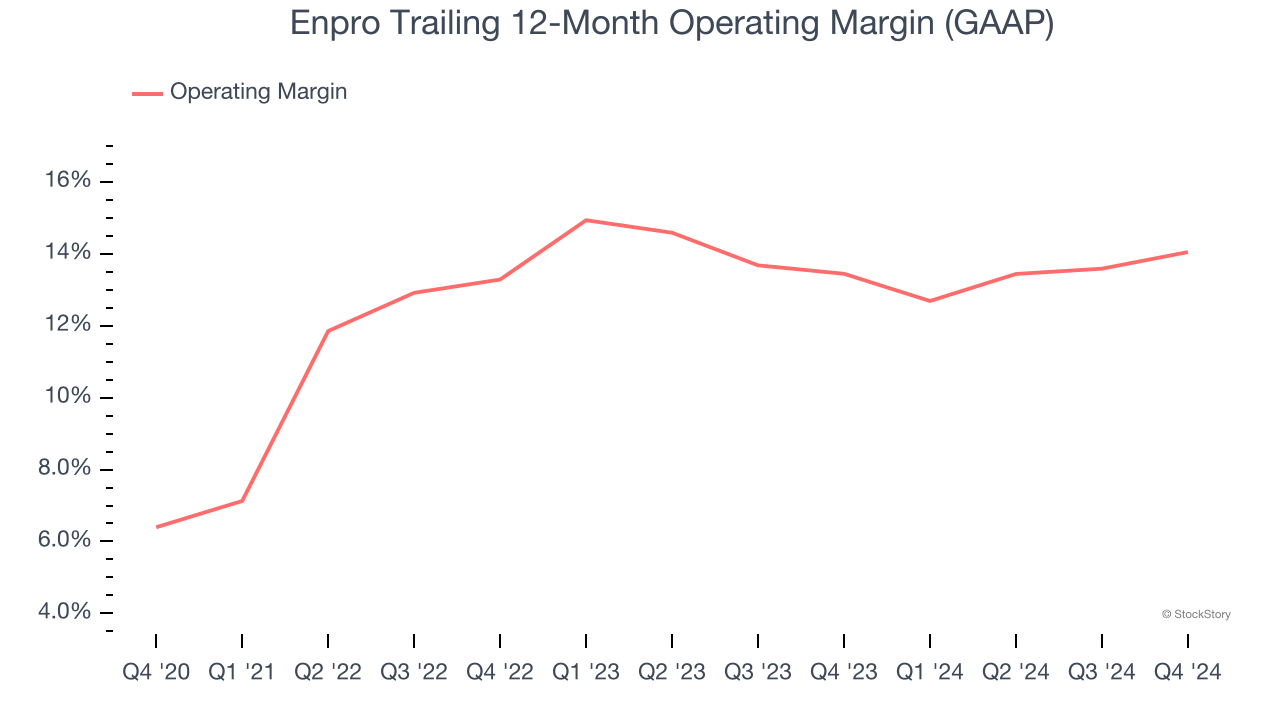
This quarter, Enpro generated an operating profit margin of 12.5%, up 2 percentage points year on year. Since its gross margin expanded more than its operating margin, we can infer that leverage on its cost of sales was the primary driver behind the recently higher efficiency.
Earnings Per Share
We track the long-term change in earnings per share (EPS) for the same reason as long-term revenue growth. Compared to revenue, however, EPS highlights whether a company’s growth is profitable.
Enpro’s EPS grew at a remarkable 13.2% compounded annual growth rate over the last five years, higher than its 2.8% annualized revenue declines. This tells us management adapted its cost structure in response to a challenging demand environment.
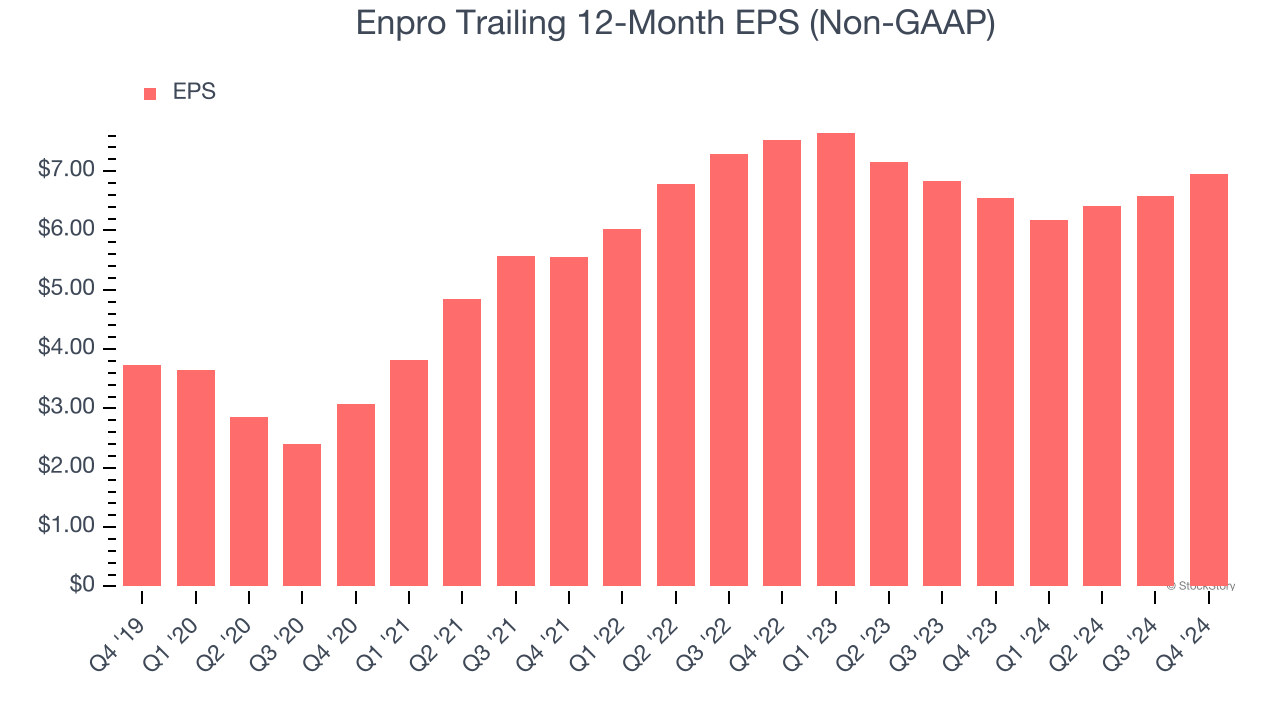
Diving into the nuances of Enpro’s earnings can give us a better understanding of its performance. As we mentioned earlier, Enpro’s operating margin expanded by 7.6 percentage points over the last five years. This was the most relevant factor (aside from the revenue impact) behind its higher earnings; taxes and interest expenses can also affect EPS but don’t tell us as much about a company’s fundamentals.
Like with revenue, we analyze EPS over a shorter period to see if we are missing a change in the business.
For Enpro, its two-year annual EPS declines of 3.9% mark a reversal from its (seemingly) healthy five-year trend. We hope Enpro can return to earnings growth in the future.
In Q4, Enpro reported EPS at $1.57, up from $1.19 in the same quarter last year. This print beat analysts’ estimates by 6.6%. Over the next 12 months, Wall Street expects Enpro’s full-year EPS of $6.96 to grow 9.9%.
Key Takeaways from Enpro’s Q4 Results
We enjoyed seeing Enpro exceed analysts’ revenue, EPS, and EBITDA expectations this quarter. On the other hand, its full-year EPS guidance fell short of Wall Street’s estimates. Zooming out, we still think this was a decent quarter. The stock remained flat at $197 immediately following the results.
Sure, Enpro had a solid quarter, but if we look at the bigger picture, is this stock a buy? What happened in the latest quarter matters, but not as much as longer-term business quality and valuation, when deciding whether to invest in this stock. We cover that in our actionable full research report which you can read here, it’s free.


